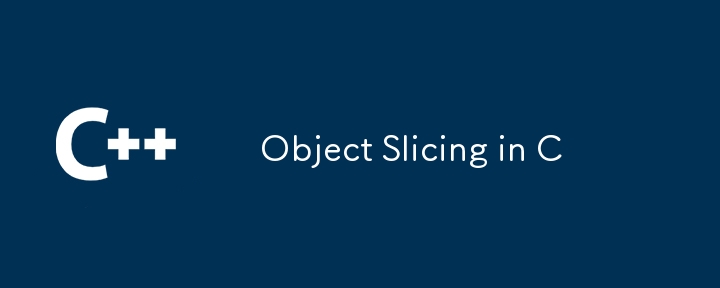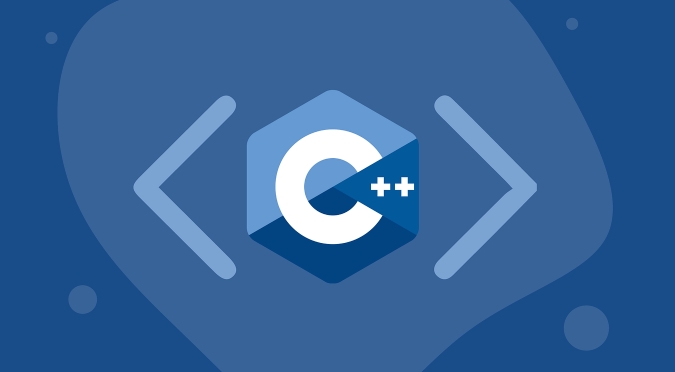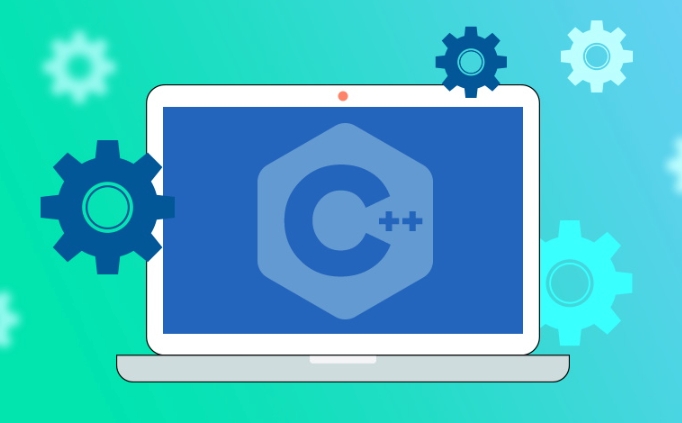Object slice refers to the phenomenon that only part of the base class data is copied when assigning or passing a derived class object to a base class object, resulting in the loss of new members of the derived class. 1. Object slices occur in containers that directly assign values, pass parameters by value, or store polymorphic objects in storage base classes; 2. The consequences include data loss, abnormal behavior and difficult to debug; 3. Avoiding methods include passing polymorphic objects using pointers or references, or using smart pointers to manage the object life cycle.

In C, Object Slicing is a language feature that is easily overlooked but can cause serious problems. It usually occurs when receiving derived class objects with base class objects, causing the newly added member variables in the derived class to be "cut off", retaining only the part of the base class. This can cause data loss and abnormal behavior problems.

What is object slicing?
Object slices refer to when you assign or pass a derived class object to an object of the base class type, the compiler will only copy the data of the base class part, and the extended members in the derived class will be "cut off".
For example:

struct Base {
int a;
};
struct Derived : Base {
int b;
};
Derived d;
Base b = d; // Object slice happens here, there is no db in b At this time, b only contains a , and the information of db is lost.
What situations are prone to trigger object slicing?
Direct assignment or initialization

Base base = derived; // Slicing happens here
Pass parameters by value
void foo(Base b); Derived d; foo(d); // The parameters are passed by value, and slices will occur
Container storage base class object
std::vector<Base> vec; Derived d; vec.push_back(d); // The stored type is Base, not Derived
In these scenarios, you may mistakenly think that you are operating with complete derived class objects, but in fact only the base class part is preserved.
How to avoid object slicing?
To avoid this problem, the key is not to deal with polymorphic objects in a "value" way, but use pointers or references:
? Use pointers (naked pointers or smart pointers)
std::unique_ptr<Base> ptr = std::make_unique<Derived>();
? Pass parameters using references
void foo(const Base& b); // Can't slice
? If multiple types of objects must be stored in the container, you can:
std::vector<std::unique_ptr<Base>> objects; objects.push_back(std::make_unique<Derived>());
Note: If you just want to access virtual functions, both references and pointers can be dynamically bound correctly; but if member variables are involved, there will be problems with the copy of the value.
What are the consequences of object slicing?
- Data Loss: Additional members in the derived class will not be copied.
- Behavior error: If the derived class overrides the virtual function but is sliced during the value transfer process, although the function can be called normally, it operates in the wrong object state.
- Difficult to debug: the slice will not report an error, the running result may seem "reasonable", but it is logically wrong.
for example:
struct Animal {
virtual void speak() { cout << "..." << endl; }
};
struct Dog : Animal {
void speak() override { cout << "Woof!" << endl; }
};
void makeSpeak(Animal a) {
a.speak();
}
Dog dog;
makeSpeak(dog); // The output may be "...", not "Woof!" Here, even if speak() is a virtual function, it may not be able to show the expected behavior because it becomes an Animal type object after slice.
Basically that's it. Object slicing is not a syntax error, but can cause program behavior abnormalities, especially in polymorphic programming. Just remember: use pointers or references to process polymorphic objects, and do not use values to copy them , to effectively avoid this pit.
The above is the detailed content of Object Slicing in C. For more information, please follow other related articles on the PHP Chinese website!

Hot AI Tools

Undress AI Tool
Undress images for free

Undresser.AI Undress
AI-powered app for creating realistic nude photos

AI Clothes Remover
Online AI tool for removing clothes from photos.

Clothoff.io
AI clothes remover

Video Face Swap
Swap faces in any video effortlessly with our completely free AI face swap tool!

Hot Article

Hot Tools

Notepad++7.3.1
Easy-to-use and free code editor

SublimeText3 Chinese version
Chinese version, very easy to use

Zend Studio 13.0.1
Powerful PHP integrated development environment

Dreamweaver CS6
Visual web development tools

SublimeText3 Mac version
God-level code editing software (SublimeText3)
 How to develop AI-based text summary with PHP Quick Refining Technology
Jul 25, 2025 pm 05:57 PM
How to develop AI-based text summary with PHP Quick Refining Technology
Jul 25, 2025 pm 05:57 PM
The core of PHP's development of AI text summary is to call external AI service APIs (such as OpenAI, HuggingFace) as a coordinator to realize text preprocessing, API requests, response analysis and result display; 2. The limitation is that the computing performance is weak and the AI ecosystem is weak. The response strategy is to leverage APIs, service decoupling and asynchronous processing; 3. Model selection needs to weigh summary quality, cost, delay, concurrency, data privacy, and abstract models such as GPT or BART/T5 are recommended; 4. Performance optimization includes cache, asynchronous queues, batch processing and nearby area selection. Error processing needs to cover current limit retry, network timeout, key security, input verification and logging to ensure the stable and efficient operation of the system.
 C bit manipulation example
Jul 25, 2025 am 02:33 AM
C bit manipulation example
Jul 25, 2025 am 02:33 AM
Bit operation can efficiently implement the underlying operation of integers, 1. Check whether the i-th bit is 1: Use n&(1
 C function example
Jul 27, 2025 am 01:21 AM
C function example
Jul 27, 2025 am 01:21 AM
Functions are the basic unit of organizing code in C, used to realize code reuse and modularization; 1. Functions are created through declarations and definitions, such as intadd(inta,intb) returns the sum of the two numbers; 2. Pass parameters when calling the function, and return the result of the corresponding type after the function is executed; 3. The function without return value uses void as the return type, such as voidgreet(stringname) for outputting greeting information; 4. Using functions can improve code readability, avoid duplication and facilitate maintenance, which is the basic concept of C programming.
 C decltype example
Jul 27, 2025 am 01:32 AM
C decltype example
Jul 27, 2025 am 01:32 AM
decltype is a keyword used by C 11 to deduce expression types at compile time. The derivation results are accurate and do not perform type conversion. 1. decltype(expression) only analyzes types and does not calculate expressions; 2. Deduce the variable name decltype(x) as a declaration type, while decltype((x)) is deduced as x due to lvalue expression; 3. It is often used in templates to deduce the return value through tail-set return type auto-> decltype(t u); 4. Complex type declarations can be simplified in combination with auto, such as decltype(vec.begin())it=vec.begin(); 5. Avoid hard-coded classes in templates
 C fold expressions example
Jul 28, 2025 am 02:37 AM
C fold expressions example
Jul 28, 2025 am 02:37 AM
C folderexpressions is a feature introduced by C 17 to simplify recursive operations in variadic parameter templates. 1. Left fold (args...) sum from left to right, such as sum(1,2,3,4,5) returns 15; 2. Logical and (args&&...) determine whether all parameters are true, and empty packets return true; 3. Use (std::cout
 C range-based for loop tutorial
Jul 27, 2025 am 12:49 AM
C range-based for loop tutorial
Jul 27, 2025 am 12:49 AM
C's range-basedfor loop improves code readability and reduces errors by simplifying syntax. Its basic structure is for(declaration:range), which is suitable for arrays and STL containers, such as traversing intarr[] or std::vectorvec. Using references (such as conststd::string&name) can avoid copy overhead and can modify element content. Notes include: 1. Do not modify the container structure in the loop; 2. Ensure that the range is effective and avoid the use of freed memory; 3. There is no built-in index and requires manual maintenance of the counter. Mastering these key points allows you to use this feature efficiently and safely.
 C binary search tree example
Jul 28, 2025 am 02:26 AM
C binary search tree example
Jul 28, 2025 am 02:26 AM
ABinarySearchTree(BST)isabinarytreewheretheleftsubtreecontainsonlynodeswithvalueslessthanthenode’svalue,therightsubtreecontainsonlynodeswithvaluesgreaterthanthenode’svalue,andbothsubtreesmustalsobeBSTs;1.TheC implementationincludesaTreeNodestructure
 C call python script from C example
Jul 26, 2025 am 07:00 AM
C call python script from C example
Jul 26, 2025 am 07:00 AM
Calling Python scripts in C requires implementation through PythonCAPI. First, initialize the interpreter, then import the module and call the function, and finally clean up the resources; the specific steps are: 1. Initialize the Python interpreter with Py_Initialize(); 2. Load the Python script module with PyImport_Import(); 3. Obtain the objective function through PyObject_GetAttrString(); 4. Use PyObject_CallObject() to pass parameters to call the function; 5. Call Py_DECREF() and Py_Finalize() to release the resource and close the interpreter; in the example, hello is successfully called







